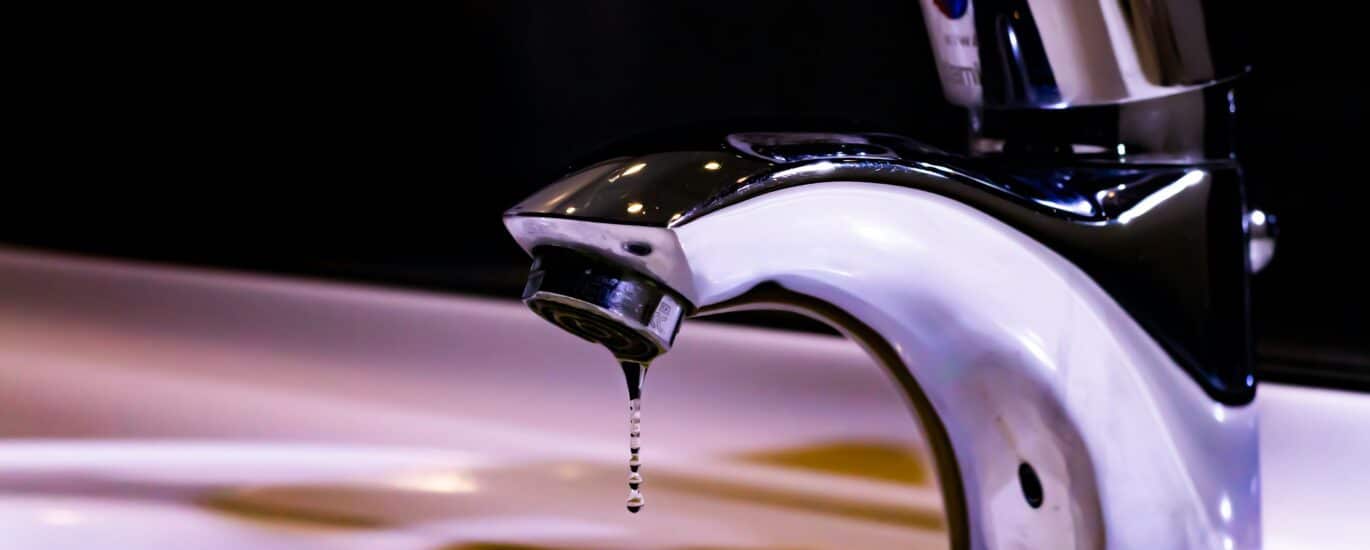Water bills getting too high is a common worry for many Aussie households. Did you know a dripping tap can waste over 10,000 litres of water a year? This article will guide you on how to cut down your water bill and save precious H2O.
Read on for simple steps to make a difference.
Understanding Your Water Bill
To lower your water bill, first know how it’s measured. Your bill includes several charges, not just for the water you use.
How water is measured
Water is measured in litres or cubic meters. One cubic meter equals 1,000 litres. This helps everyone understand how much water they use. Your water meter at home tracks this usage.
It counts all the water flowing into your pipes.
Reading your meter often can show you changes in your water use. This way, you spot leaks or high usage early on. Each bill from the company tells you how many cubic meters you’ve used since the last one.
So, keeping an eye on these numbers can help lower bills and save water.
Common charges on water bills
Knowing how much water you use sets the stage for understanding your bill. Your water bill may include several costs. Most bills have a fixed charge, which is what you pay no matter how much water you use.
This covers service and maintenance of the water system. Then, there’s the usage charge based on the amount of water you actually use, measured in kilolitres.
There might also be charges for wastewater services. This part depends on how much sewage your household produces and sometimes includes stormwater fees as well. In some places, extra fees help fund conservation efforts or infrastructure projects aimed at saving water across communities in Australia.
Each section plays a role in your total bill, showing why conserving water and cutting down usage are key steps towards lowering these costs.
Tips for Lowering Water Bills
Cutting down your water bills starts with smart moves at home. Peek into simple changes that can make big differences in your savings and water use.
Check for leaks
Small drips can lead to big hikes in your water bill. Take some time to check pipes, taps, and toilets for leaks. A good tip is to read your water meter before bed and then again in the morning.
If nobody used any water overnight but the meter changed, you might have a leak. Fixing leaks quickly saves water and lowers your bills.
Install leak detectors to monitor your home’s water usage. These handy gadgets send alerts if they sense a problem, helping you catch leaks early. Keeping an eye out for wet spots around sinks, showers, and hoses can also clue you in to hidden leaks that need attention.
Limit shower time
Cutting down your shower time can save a lot of water. Try to keep showers short, aiming for about 4 minutes. You can even use a timer to help stay on track. This simple change significantly reduces water usage and can lower your bills.
By doing this, everyone in the house plays a part in conserving water. It’s an easy step that makes a big difference over time. Plus, it cuts down the energy needed to heat up all that extra water you won’t be using!
Use a water-efficient showerhead
Shifting gears from limiting your shower time, switching to a water-efficient showerhead is another smart move. These showerheads use less water without cutting down on your shower’s quality.
They mix air with water or create finer sprays that still feel great but save a lot of water. With this simple change, you can slash the amount of water used in every shower by half! Imagine all those litres and dollars saved over time.
This swap is easy and cost-effective. Most hardware stores sell these efficient models, and they fit onto your existing plumbing. You don’t need fancy tools or skills to make the switch either.
Once installed, it works quietly behind the scenes, cutting down your water usage and bills without any extra effort from you. This way, saving water becomes part of your daily routine, effortlessly helping the environment and keeping more money in your pocket.
Install aerators on faucets
Faucet aerators are easy to add to your taps. They mix air with water, cutting down on the amount used without reducing water pressure. This means you can save water and lower your bills by simply screwing an aerator onto each tap.
These small devices are affordable and work well in kitchens and bathrooms.
By using faucet aerators, you’re joining a smart move to conserve water in Australia. It’s a simple step that adds up big time over the year, helping to reduce overall water consumption in your home.
Plus, installing them is something you can do yourself – no need for a plumber in Adelaide!
Use a dishwasher instead of hand-washing dishes
After installing aerators, another great strategy for saving water is to use a dishwasher. It might surprise many, but dishwashers use less water than washing dishes by hand. For families wanting to cut down their water bill and save time, this is a smart move.
Making full loads before running the dishwasher maximises efficiency and conserves more water.
Using a modern, efficient dishwasher can make a big difference in water consumption compared to traditional hand-washing methods. This change reflects well on both your utility bills and environmental impact of water usage.
So, switching to a dishwasher makes chores easier and supports household water conservation efforts effectively.
Simple Water-Saving Habits
Creating simple water-saving habits can make a big difference. Turning off the tap while brushing your teeth saves litres of water each day.
Turn off the tap while brushing your teeth
Turning off the tap while you brush your teeth is a simple yet effective water-saving technique. It saves litres of water every time, directly helping to reduce your water bills and conserve vital resources.
Most people don’t realise that letting the tap run during brushing can waste over 6 litres per minute. So, imagine how much you save by just turning it off! Getting into this habit is easy and makes a big difference in overall household water consumption—and on our planet too.
By doing this small act every day, multiple times a day, the savings add up quickly over weeks and months. Plus, teaching kids to turn off the tap helps them learn about water conservation from an early age.
They’ll carry these wise habits forward, contributing to long-term environmental health. This practice doesn’t cost anything but offers significant benefits for both your wallet and nature’s wellbeing.
Only run the dishwasher or washing machine when full
Making sure your dishwasher or washing machine is full before you start it saves a lot of water. This simple step can cut down your water usage and reduce your bills. It’s a smart move for anyone looking to conserve water and lower their expenses.
By waiting until you have a full load, you make the most out of every wash, which means less waste and more savings.
Next up, fixing leaks quickly also plays a big part in saving water around the house…
Fix leaks promptly
After making sure your dishwasher or washing machine is full before running them, it’s crucial to turn our attention to fixing leaks quickly. A small drip from a leaky tap can waste a lot of water over time.
This loss bumps up your water bill more than you might think. Fast action on repairing leaks helps save water and money. Whether it’s the kitchen sink, the bathroom faucet, or the pipes under the house, getting these fixed as soon nonly can make a big difference in conserving water and cutting down on unnecessary expenses.
Leaky toilets are another silent culprit that can add significant costs to your bills without you even knowing. By checking regularly for any signs of leaks and acting swiftly when they’re found, you’re taking an important step in reducing water usage and keeping your bills lower.
It’s not just about tightening a nut or replacing a washer; sometimes calling in a professional sooner rather than later prevents bigger issues down the line—saving both water and wallet from taking an unnecessary hit.
Consider using greywater for outdoor purposes
Fixing leaks is a great step to conserve water. Next, think about using greywater for your garden. Greywater comes from baths, showers, washing machines, and sinks. It’s not fresh but still good for watering plants.
This method can save you loads of clean water that would otherwise go to waste.
Using greywater means less fresh water used outdoors. Set up a system to collect greywater at home. It’s simple and helps the environment too. Plus, it cuts down on your water bills by making use of water that would have gone down the drain.
Outdoor Water-Saving Tips
For those with gardens, saving water outdoors is key—explore how to keep your plants happy while using less water.
Use a broom to clean driveways and sidewalks instead of hosing them down
Save water by using a broom to sweep your driveways and sidewalks. It keeps water in the tank and stops waste. This simple step can make a big change in how much water you use outside your home.
Sweeping up leaves and dirt with a broom does not need any water, unlike hosing down these areas which can use lots of litres very quickly.
Next, consider the best times to water plants to keep them healthy without wasting water.
Water plants in the early morning or late evening to prevent evaporation
Moving from cleaning your outdoor spaces efficiently, another simple yet powerful water-saving tip is to focus on the best time to water plants. Watering plants in the early morning or late evening significantly reduces evaporation.
This means more water goes directly to your plants instead of disappearing into the air. By doing this, you make every drop count and help keep your garden thriving with less water.
This approach conserves precious water and ensures that your plants get the deep watering they need during cooler parts of the day. It’s a small change that can lead to big savings on your water bills over time.
Plus, it’s an easy step towards being more environmentally conscious by reducing overall water consumption in our daily routines.
Consider installing a rain barrel for watering plants
To save even more water, think about getting a rain barrel. Collecting rainwater is a fantastic way to keep your garden green without turning on the tap. This method lowers your water bills and also helps in preserving precious resources.
Installing one is simple and can make a big difference in how much water you use outdoors. Plus, plants love rainwater because it’s free of many chemicals found in tap water, making your garden healthier.
Conclusion
Saving water and cutting down on bills is easy with the right tips. Fix leaks, use water-saving devices, and change everyday habits to make a big difference. Australias can join together in this effort.
Small steps at home lead to big savings on your water bill and help our planet too. Let’s all do our part for a greener future.






